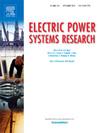Electrical energy load forecasting using a hybrid N-BEATS - CNN Approach: Case study Montenegro
IF 3.3
3区 工程技术
Q2 ENGINEERING, ELECTRICAL & ELECTRONIC
引用次数: 0
Abstract
Accurate electrical load forecasting is crucial for power system reliability, particularly amidst rapid energy transitions. This paper proposes a novel hybrid forecasting model that integrates convolutional neural networks (CNNs) with N-BEATS, leveraging CNNs for efficient feature extraction and N-BEATS for high accuracy predictions. Applied to the Montenegrin electricity power system (MEPS), the model is evaluated against existing architectures across multiple scenarios. Data augmentation techniques that incorporate external sources significantly enhance forecasting accuracy. The proposed model achieves a mean absolute percentage error (MAPE) of 2.44% and an R score of 97.93%, outperforming state-of-the-art approaches. Additional improvements in predictive performance can be attained through the application of ensemble techniques. These results underscore the potential of hybrid architectures in addressing complex forecasting challenges in modern power grids.
使用混合N-BEATS - CNN方法的电力负荷预测:黑山案例研究
准确的电力负荷预测对电力系统的可靠性至关重要,特别是在能源快速转换的情况下。本文提出了一种新颖的混合预测模型,该模型将卷积神经网络(cnn)与N-BEATS相结合,利用cnn进行高效的特征提取,利用N-BEATS进行高精度预测。将该模型应用于黑山电力系统(MEPS),在多个场景中对现有架构进行评估。结合外部来源的数据增强技术显著提高了预测的准确性。该模型的平均绝对百分比误差(MAPE)为2.44%,R2得分为97.93%,优于目前最先进的方法。通过集成技术的应用可以获得预测性能的进一步改进。这些结果强调了混合架构在解决现代电网复杂预测挑战方面的潜力。
本文章由计算机程序翻译,如有差异,请以英文原文为准。
求助全文
约1分钟内获得全文
求助全文
来源期刊

Electric Power Systems Research
工程技术-工程:电子与电气
CiteScore
7.50
自引率
17.90%
发文量
963
审稿时长
3.8 months
期刊介绍:
Electric Power Systems Research is an international medium for the publication of original papers concerned with the generation, transmission, distribution and utilization of electrical energy. The journal aims at presenting important results of work in this field, whether in the form of applied research, development of new procedures or components, orginal application of existing knowledge or new designapproaches. The scope of Electric Power Systems Research is broad, encompassing all aspects of electric power systems. The following list of topics is not intended to be exhaustive, but rather to indicate topics that fall within the journal purview.
• Generation techniques ranging from advances in conventional electromechanical methods, through nuclear power generation, to renewable energy generation.
• Transmission, spanning the broad area from UHV (ac and dc) to network operation and protection, line routing and design.
• Substation work: equipment design, protection and control systems.
• Distribution techniques, equipment development, and smart grids.
• The utilization area from energy efficiency to distributed load levelling techniques.
• Systems studies including control techniques, planning, optimization methods, stability, security assessment and insulation coordination.
 求助内容:
求助内容: 应助结果提醒方式:
应助结果提醒方式:


